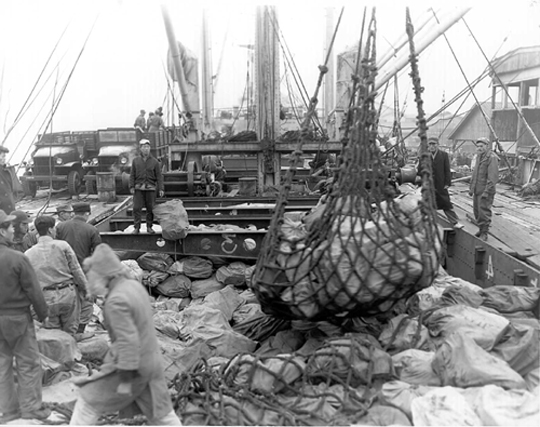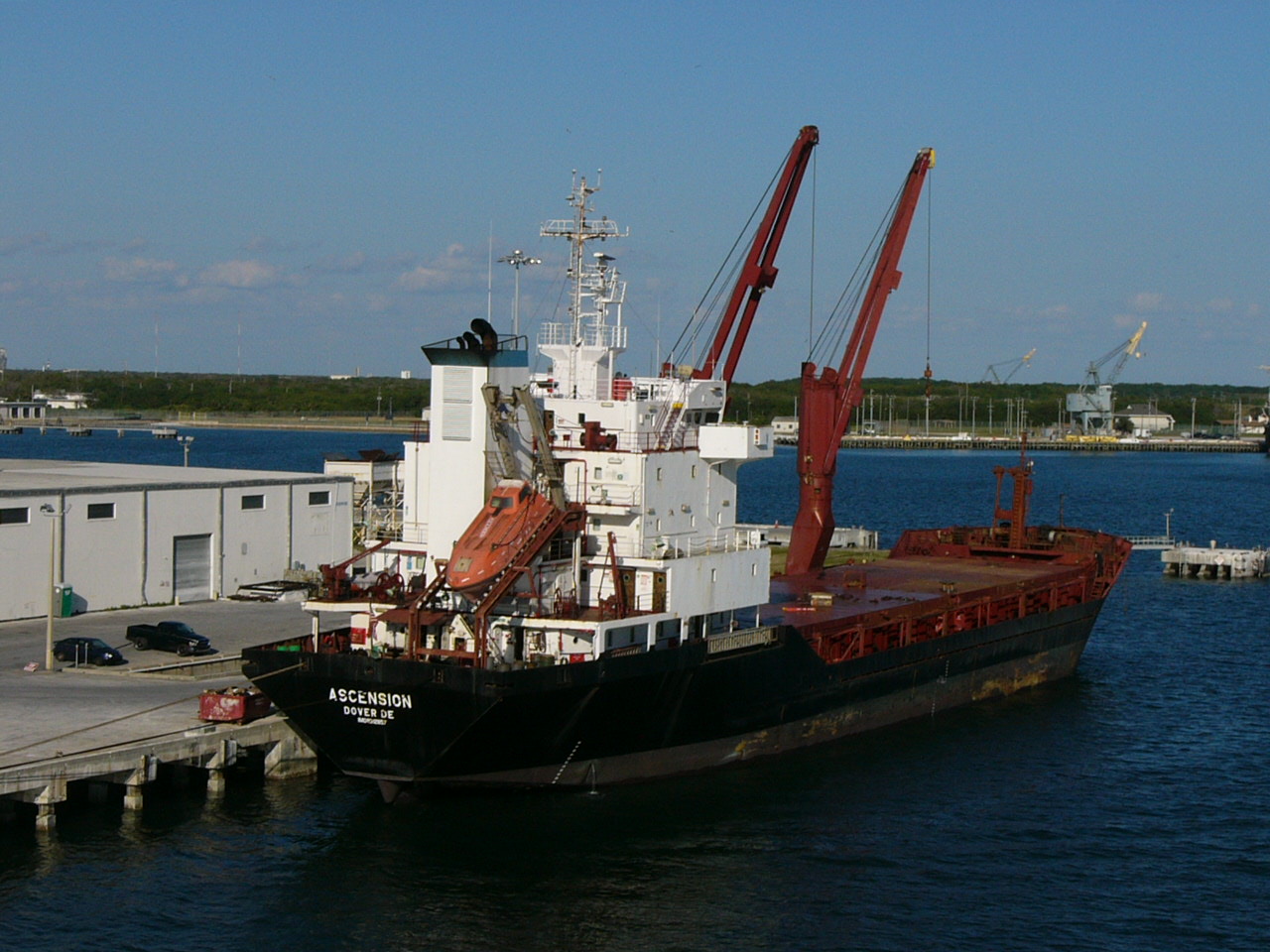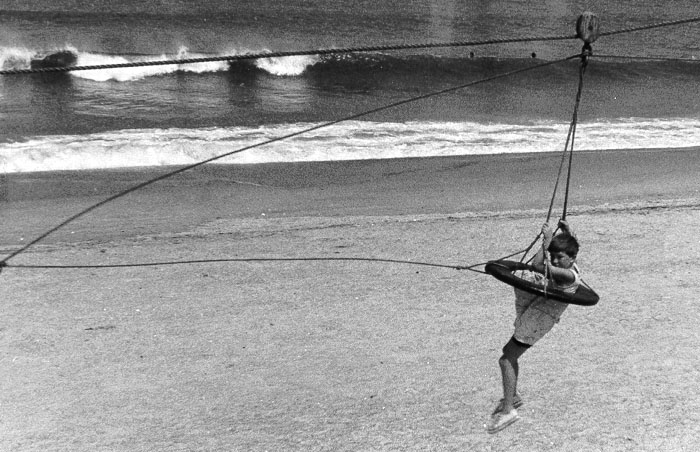|
Ranga (ship)
The motor ship ''Ranga'' was a 1,586 tonne container ship owned by the Spanish shipping company, Naviera Ason SA, but on charter to the Icelandic shipping company, Hafskip. She was formerly named ''Berta de Perez'', but her name was changed at sea to ''Ranga'', due to the Icelandic charter. The ''Ranga'' was on her maiden voyage from Vigo to Reykjavík under Captain Miguel Ángel Díaz Madariaga. The ship lost power on this voyage during a storm, and was wrecked at at Dunmore Head, close to Coumeenole Beach, near Slea Head on the Dingle peninsula, County Kerry, Ireland on 11 March 1982. Rescue The local rescue team comprising members of Dingle Fire Brigade, the Garda Síochána and emergency services, rescued some of the fifteen crew members by Breeches buoy. The remainder were taken off by an RAF helicopter. Captain Miguel Ángel Díaz Madariaga was the last to be rescued and dropped off the vessel. Disposal The ship was a total loss and created oil pollution as she broke ... [...More Info...] [...Related Items...] OR: [Wikipedia] [Google] [Baidu] |
Flag Of Spain
The flag of Spain (), as it is defined in the Spanish Constitution of 1978, Constitution of 1978, consists of three horizontal stripes: red, yellow and red, the yellow stripe being twice the height of each red stripe. Traditionally, the middle colour was called by the archaic term (Reseda luteola, weld, a natural dye); hence the flag's nickname (the red–weld). The middle stripe often bears the coat of arms of Spain. The origin of the current flag of Spain is the naval ensign of 1785, , by Decrée of Charles III of Spain, where it is also referred as ''national flag''. It was chosen by Charles III himself from 12 different flags designed by Antonio Valdés y Bazán. All proposed flags were presented in a drawing, which is in the Naval Museum of Madrid. The flag remained marine-focused for most of the next 50 years and flew over coastal fortresses, marine barracks and other naval property. During the Peninsular War, the flag could also be found on marine regiments fighting ... [...More Info...] [...Related Items...] OR: [Wikipedia] [Google] [Baidu] |
Royal Air Force
The Royal Air Force (RAF) is the Air force, air and space force of the United Kingdom, British Overseas Territories and Crown Dependencies. It was formed towards the end of the World War I, First World War on 1 April 1918, on the merger of the Royal Flying Corps (RFC) and the Royal Naval Air Service (RNAS). Following the Allies of World War I, Allied victory over the Central Powers in 1918, the RAF emerged as the largest air force in the world at the time. Since its formation, the RAF has played History of the Royal Air Force, a significant role in Military history of the United Kingdom, British military history. In particular, during the Second World War, the RAF established Air supremacy, air superiority over Nazi Germany's Luftwaffe during the Battle of Britain, and led the Allied strategic bombing effort. The RAF's mission is to support the objectives of the British Ministry of Defence (United Kingdom), Ministry of Defence (MOD), which are to "provide the capabilities nee ... [...More Info...] [...Related Items...] OR: [Wikipedia] [Google] [Baidu] |
Shipwrecks Of Ireland
A shipwreck is the wreckage of a ship that is located either beached on land or sunken to the bottom of a body of water. It results from the event of '' shipwrecking'', which may be intentional or unintentional. There were approximately three million shipwrecks worldwide as of January 1999, according to Angela Croome, a science writer and author who specialized in the history of underwater archaeology (an estimate rapidly endorsed by UNESCO and other organizations). When a ship's crew has died or abandoned the ship, and the ship has remained adrift but unsunk, they are instead referred to as ''ghost ships''. Types Historic wrecks are attractive to maritime archaeologists because they preserve historical information: for example, studying the wreck of revealed information about seafaring, warfare, and life in the 16th century. Military wrecks, caused by a skirmish at sea, are studied to find details about the historic event; they reveal much about the battle that occ ... [...More Info...] [...Related Items...] OR: [Wikipedia] [Google] [Baidu] |
Maritime Incidents In 1982
Maritime may refer to: Geography * Maritime Alps, a mountain range in the southwestern part of the Alps * Maritime Region, a region in Togo * Maritime Southeast Asia * The Maritimes, the Canadian provinces of Nova Scotia, New Brunswick, and Prince Edward Island * Maritime County, former county of Poland, existing from 1927 to 1939, and from 1945 to 1951 * Neustadt District, Reichsgau Danzig-West Prussia, known from 1939 to 1942 as ''Maritime District'', a former district of Reichsgau Danzig-West Prussia, Nazi Germany, from 1939 to 1945 * The Maritime Republics, thalassocratic city-states on the Italian peninsula during the Middle Ages Museums * Maritime museum (sometimes nautical museum), a museum for the display of objects relating to ships and travel on large bodies of water. * Maritime Museum (Belize) * Maritime Museum (Macau), China * Maritime Museum (Malaysia) * Maritime Museum (Stockholm), Sweden Music * ''Maritime'' (album), a 2005 album by Minotaur Shock * Maritim ... [...More Info...] [...Related Items...] OR: [Wikipedia] [Google] [Baidu] |
Container Ships
A container ship (also called boxship or spelled containership) is a cargo ship that carries all of its load in truck-size intermodal containers, in a technique called containerization. Container ships are a common means of commercial intermodal freight transport and now carry most seagoing non-bulk cargo. Container ship capacity is measured in twenty-foot equivalent units (TEU). Typical loads are a mix of 20-foot (1-TEU) and 40-foot (2-TEU) ISO 668, ISO-standard containers, with the latter predominant. Today, about 90% of non-bulk cargo worldwide is transported by container ships, the largest of which, from 2023 onward, can carry over 24,000 TEU. History There are two main types of dry cargo: bulk cargo and break bulk cargo. Bulk cargoes, like grain or coal, are transported unpackaged in the hull of the ship, generally in large volume. Break-bulk cargoes, in contrast, are transported in packages, and are generally manufactured goods. Before the advent of containerizatio ... [...More Info...] [...Related Items...] OR: [Wikipedia] [Google] [Baidu] |
MV Plassy
MV ''Plassy'', or ''Plassey'', was a cargo ship in the Irish Merchant Service, operating during the 1950s. It was built as HMS ''Juliet'', a naval trawler of the Royal Navy at the start of the Second World War, and sold into merchant service at the end of the conflict. As ''Plassy'' it was wrecked in a storm off Inisheer, and is best known as the wreck seen on the foreshore of 'Craggy Island' in the TV comedy, ''Father Ted''. As ''Juliet'' ''Juliet'' was built by Cook, Welton & Gemmell at Beverley, Yorkshire, at the beginning of World War II. It was ordered on 12 December 1939 and laid down the following May. It was launched on 2 October 1940 and entered service with the Royal Navy on 20 March 1941 as a minesweeper. ''Juliet'' served in home waters until November 1942 when it took part in Operation Torch, the Allied landings in French North Africa. Thereafter it worked in the Mediterranean. At the end of the conflict ''Juliet'' was no longer required by the Royal Navy and in 1 ... [...More Info...] [...Related Items...] OR: [Wikipedia] [Google] [Baidu] |
Dingle Peninsula
The Dingle Peninsula (; anglicised as Corkaguiny or Corcaguiny, the name of the corresponding barony) is the northernmost of the major peninsulas in County Kerry. It ends beyond the town of Dingle at Dunmore Head, the westernmost point of mainland Ireland. It is separated from the Iveragh Peninsula to the south by the Dingle Bay. Name The Dingle Peninsula is named after the town of Dingle. The peninsula is also commonly called ''Corca Dhuibhne'' ( Corcu Duibne) even when those referring to it are speaking in English. ''Corca Dhuibhne'', which means "seed or tribe of Duibhne" (a Goddess from Irish mythology and an Irish clan name), refers to the ''túath'' (people, nation) of ''Corco Dhuibhne'' who occupied the peninsula in the Middle Ages and who also held a number of territories in the south and east of County Kerry. Geography The peninsula exists because of the band of sandstone rock that forms the Slieve Mish mountain range at the neck of the peninsula, in the east, and ... [...More Info...] [...Related Items...] OR: [Wikipedia] [Google] [Baidu] |
Far And Away
''Far and Away'' is a 1992 American epic Western romantic adventure drama film directed by Ron Howard from a screenplay by Bob Dolman and a story by Howard and Dolman. It stars Tom Cruise and Nicole Kidman. This was the last cinematography credit for Mikael Salomon before he moved on to a directing career. The music score was by John Williams. It was screened out of competition at the 1992 Cannes Film Festival. Cruise and Kidman, who were married at the time, play Irish immigrants seeking their fortune in the 1890s America, eventually taking part in the Land Run of 1893. This was Cyril Cusack's final film before his death the following year. Plot In 1892 Ireland, tenant farmers work land they could never own and pay unfairly high rents to their wealthy landlords. Joseph Donnelly dreams of owning his own land. After his father dies, their family home is burned down by their landlord Daniel Christie's men, due to unpaid rent. Joseph travels to Daniel's home to kill him i ... [...More Info...] [...Related Items...] OR: [Wikipedia] [Google] [Baidu] |
Superstructure
A superstructure is an upward extension of an existing structure above a baseline. This term is applied to various kinds of physical structures such as buildings, bridges, or ships. Aboard ships and large boats On water craft, the superstructure consists of the parts of the ship or a boat, including sailboats, fishing boats, passenger ships, and submarines, that project above her main deck. This does not usually include its Mast (sailing), masts or any armament gun turret, turrets. Note that, in modern times, turrets do not always carry naval artillery. They can also carry missile launchers and/or antisubmarine warfare weapons. The size of a watercraft's superstructure can have many implications in the performance of ships and boats, since these structures can alter their structural rigidity, their displacements, and/or stability. These can be detrimental to any vessel's performance if they are taken into consideration incorrectly. The height and the weight of superstructure ... [...More Info...] [...Related Items...] OR: [Wikipedia] [Google] [Baidu] |
Oil Pollution
An oil spill is the release of a liquid petroleum hydrocarbon into the environment, especially the marine ecosystem, due to human activity, and is a form of pollution. The term is usually given to marine oil spills, where oil is released into the ocean or coastal waters, but spills may also occur on land. Oil spills can result from the release of crude oil from tankers, offshore platforms, drilling rigs, and wells. They may also involve spills of refined petroleum products, such as gasoline and diesel fuel, as well as their by-products. Additionally, heavier fuels used by large ships, such as bunker fuel, or spills of any oily refuse or waste oil, contribute to such incidents. These spills can have severe environmental and economic consequences. Oil spills penetrate into the structure of the plumage of birds and the fur of mammals, reducing its insulating ability, and making them more vulnerable to temperature fluctuations and much less buoyant in the water. Cleanu ... [...More Info...] [...Related Items...] OR: [Wikipedia] [Google] [Baidu] |
Breeches Buoy
A breeches buoy is a rope-based rescue device used to extract people from wrecked vessels, or to transfer people from one place to another in situations of danger. The device resembles a round emergency personal flotation device with a leg harness attached. It is similar to a zip line. The breeches buoy may be deployed from shore to ship, ship to ship, or ship to shore using a Manby mortar, rocket, kite system, or a Lyle gun, and allows evacuation of one person at a time. A line is attached to the ship, and the person being rescued is pulled to shore in the breeches buoy. History An early rescue using the equipment took place in 1866. The correspondent of the Scotsman, wrote :— Described as the first use of the apparatus, a re-enactment took place 150 years later. Eventually the Manby mortar was replaced by rockets to shoot lines to ships in distress. In 1967 a documentary on the inventor George Manby was made. Locations included Denver, Downham Market and Great Yarmou ... [...More Info...] [...Related Items...] OR: [Wikipedia] [Google] [Baidu] |




